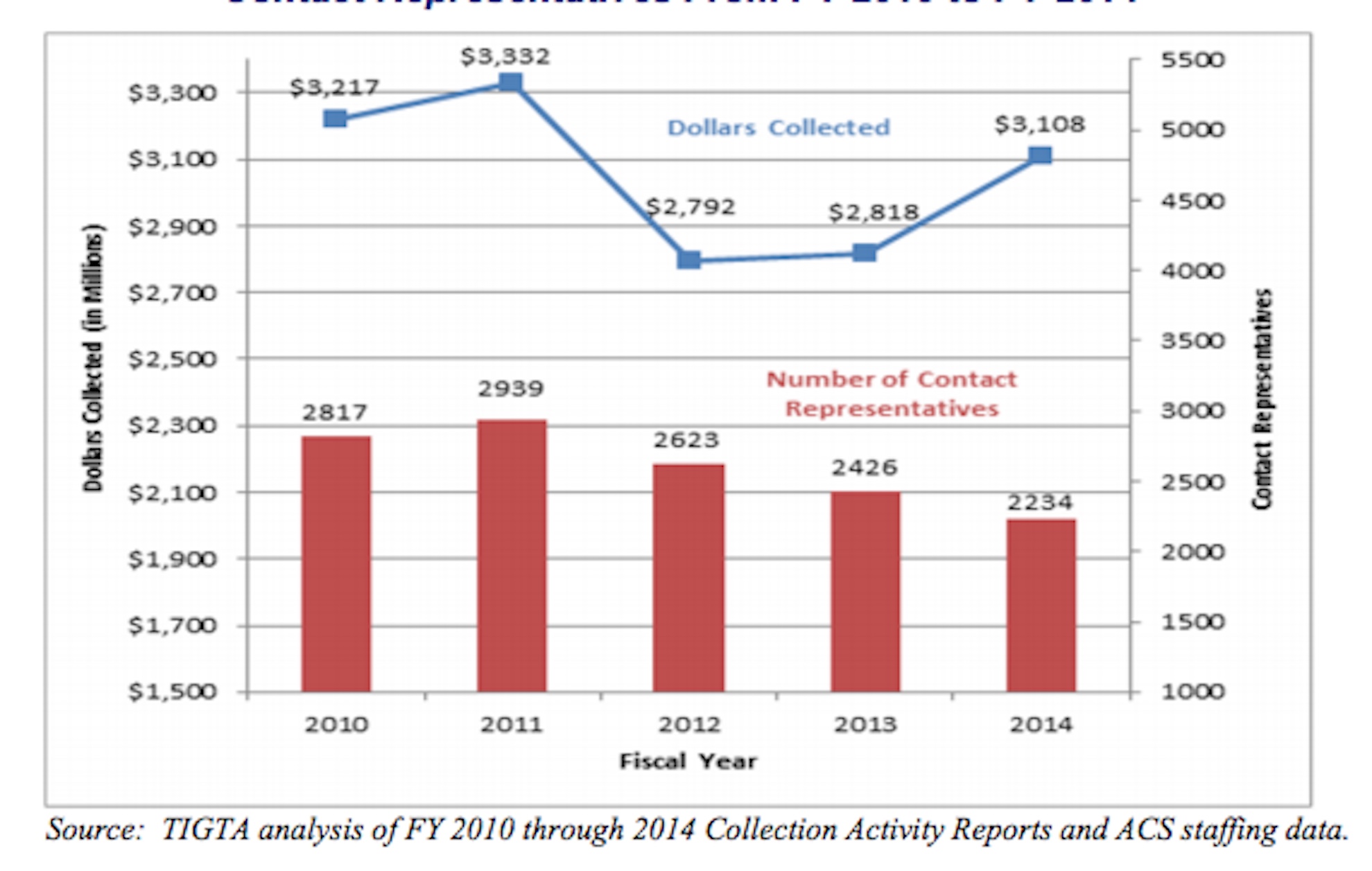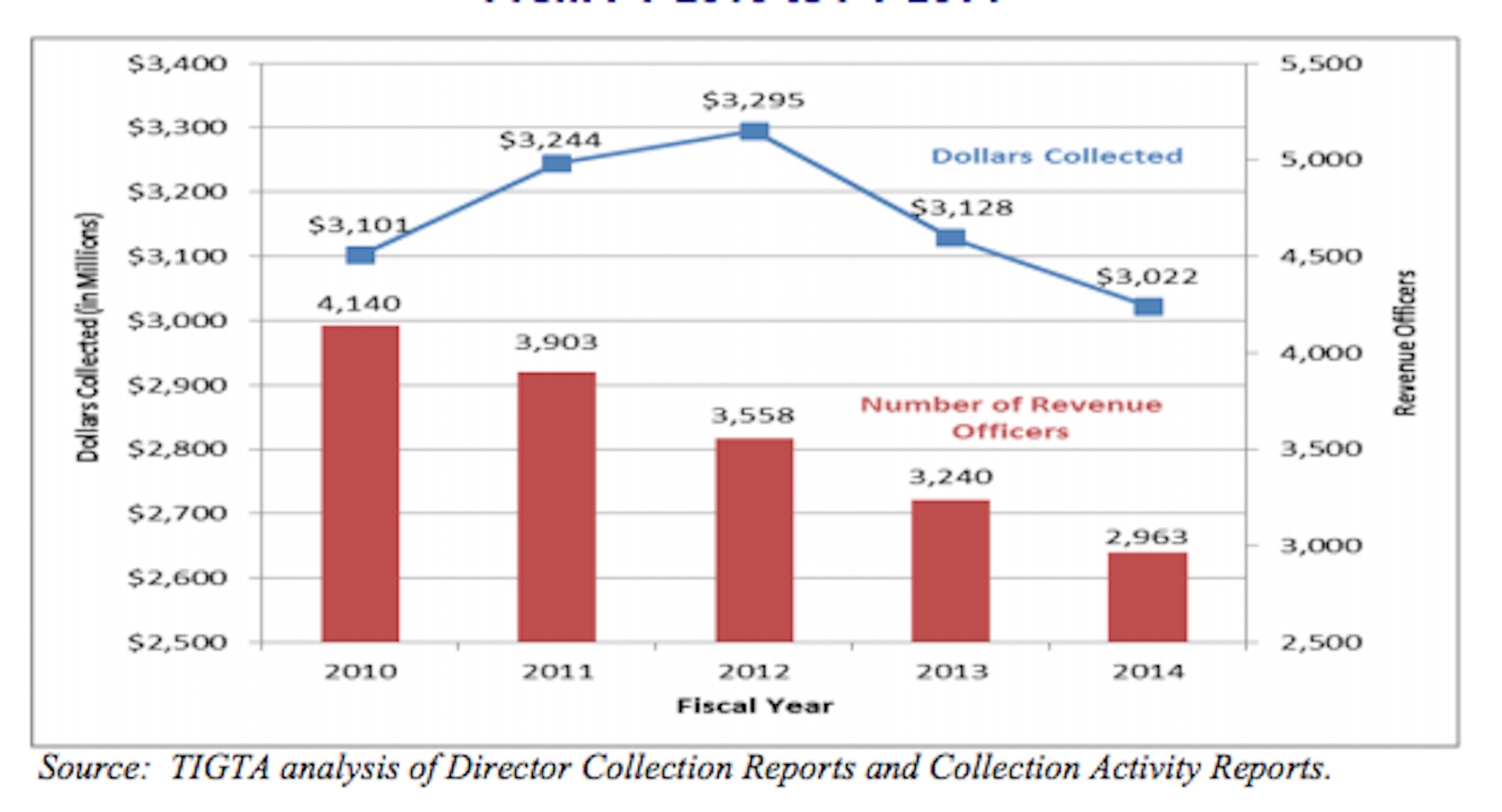The government watchdog released a report Wednesday indicating that the ability of the IRS to collect taxes hasn’t been hurt too dramatically by sharp budget cuts the agency has seen since 2010.
The Treasury Inspector General for Tax Administration’s report said tax collection has softened somewhat, but data in the report shows that revenues haven’t fallen that far in some cases, and that some revenues have increased over the last few years.
The IRS collects most of its money through voluntary compliance with tax laws. But if a tax bill is unpaid, it can be turned over to the Automated Collection System. The ACS program has seen a 28 percent drop in the number of contact representatives it employs since 2010.
That decline in personnel reflects a cut of almost $100 million from the ACS budget in 2010 compared with 2014.
However, the report showed that ACS collections were $3.2 billion in 2010, when there were 2,817 ACS workers, and $3.1 billion in 2014, when there were 2,234 ACS workers. The report admitted that’s “slightly less” in collections after a more than 20 percent cut to the workforce.
While collections fell to $2.8 billion in 2012, collections have actually been rising since then, and have been nearly flat over the entire period, even as the number of workers have fallen.

A similar pattern was seen in the IRS’ field collection efforts. The IRS has about 400 field offices around the country, and the budget for those offices has fallen by nearly $200 million between 2010 and 2014, leading to a drop of more than 1,000 employees.
But collections from field offices have fallen only slightly over the last few years. These offices collected $3.0 billion in 2014 with 2,963 employees, down from $3.1 billion in 2010, when it had 4,140 employees. That’s $100 million less in collections after a more than 25 percent cut to the workforce.
Collections from these field offices actually increased from 2010 to 2012, as the number of employees fell, and then decreased from that peak.

The report is titled, “Reduced Budgets and Collection Resources Have Resulted in Declines in Taxpayer Service, Case Closures, and Dollars Collected.” But the data shows a relatively flat affect on tax collection, especially given that the total IRS budget has fallen by $1.2 billion over that time.
The report did say, however, that the tighter budget has led to more computer downtime for IRS workers. It said officials working in various offices across the country experienced a total of 66,448 hours of computer downtime in 2014, a huge increase from the roughly 39,000 hours seen in 2013.
The report said that’s the equivalent of losing 32 full-time officials, and it blamed a lack of funding for new computers.
“The IRS was unable to make many technological enhancements due to budget reductions,” the report said. “As a result, many revenue officers had to work on outdated laptops using outdated software, which led to computer downtime.”
The total IRS budget has been cut from about $12.1 billion in 2010, to $10.9 billion in 2015. The Republican Congress has steadily cut funding to the agency for reasons such as wasteful spending on conferences and the IRS’ admission that it was slow-walking applications for tax-exempt status sought by conservative groups.
The IRS has asked for a $2 billion increase next year, an increase it’s not likely to get. IRS Commissioner John Koskinen has said lower budgets mean less customer service and reduced tax collections.

